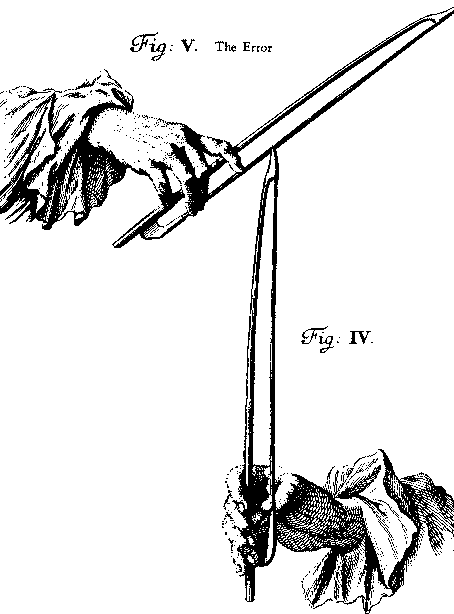Leopold Mozart
on the right hand index finger and the bow hold
It is worth noting that Leopold Mozart's Method
for violin was printed in St. Petersburg in 1804, in a Russian translation by
P.Gorson, under the title " Mr. Mozart's Thorough School for Violin
".
The St.Petersburg string school teaches a bow hold with
modest spread of the fingers. Indeed this spread is hardly noticeable, and is
quite similar in appearance to the Franco-Belgian bow hold. The violinist Milstein
also held the bow in this way, the right hand fingers hardly separated from each
other. This comfortable and commanding yet refined hold of the bow was also used
by Sarasate, who's 4th finger, like the recent violinist Spivakov's, never left
the bow. Such a similarity between the superb knowledge and style of the St.
Petersburg school and Leopold Mozart's work can be seen in this article from
Leopold Mozart's " Treatise on the fundamental principles of violin playing
". The locking and malfunctioning of the whole arm described at the end is
typical of all the danger points one is cautioned to avoid when positioning
thumbs, wrists and individual fingers. Lastly, though we are in complete
agreement about the faulty index-finger described by Mozart, the little finger
may be released from the bow when practising détaché, in order to stimulate
flexibility and string holding in the first two fingers. The following bow hold
, though it may contrast with many of the more modern and powerful / spread out
holds of today, seems refined and sophisticated and in complete accordance to
the St. Petersburg School. At any rate the excessive detachment of the index
finger in fig.V is not only ugly to see, but seriously impedes wrist mobility,
and, indeed as Mozart puts it , the whole arm suffers from a lack of style,
comfort and co-ordination.

" The bow is taken in the right hand, at its lowest
extremity, between the thumb and the middle joint of the index-finger, or even a
little behind it. Observe the illustration, Fig.IV. The little finger must lie
at all times on the bow, and never be held freely away from the stick, for it
contributes greatly to the control of the bow and therefore to the necessary
strength and weakness, by means of pressing or relaxing. Both those who hold the
bow with the first joint of the index-finger and those who lift up their little
finger, will find that the above-described method is far more apt to produce an
honest and virile tone from the violin if they be not too stubbornly attached to
another method to try this one. The first, namely, the index-finger, must
however not be stretched too far over the bow or too far from the others. One
may, at times, hold the bow with the first or second joint of the index-finger,
but the stretching out of the index-finger is at all times a serious error. For
in that way the hand stiffens because the nerves are taut, and the bowing
becomes laboured and clumsy ; yea, right awkward, as it must the be performed by
the whole arm. "